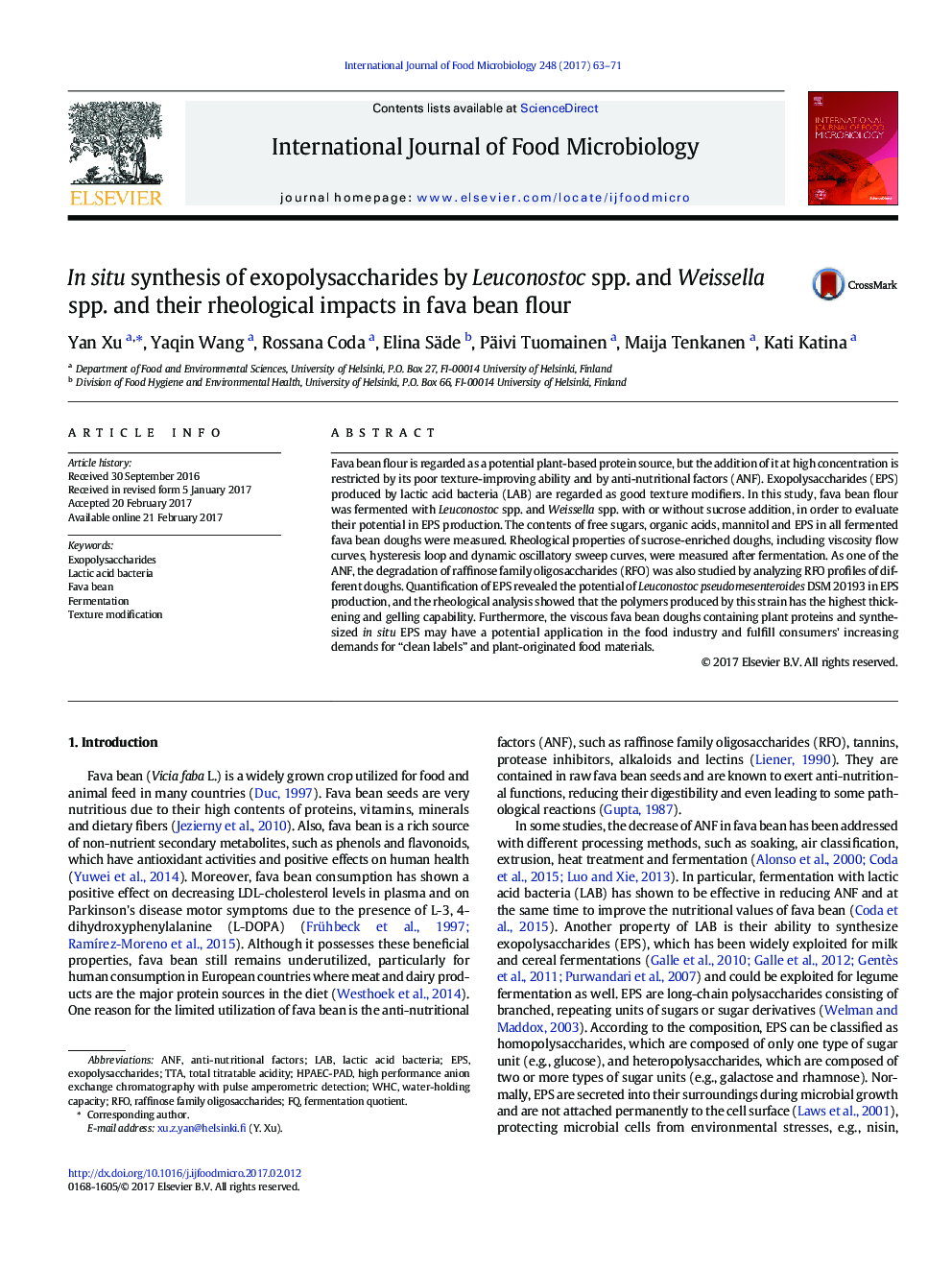| Article ID | Journal | Published Year | Pages | File Type |
|---|---|---|---|---|
| 5740790 | International Journal of Food Microbiology | 2017 | 9 Pages |
â¢Texture of fava bean doughs was significantly modified by exopolysaccharides (EPS).â¢Leuconostoc pseudomesenteroides DSM 20193 had the highest ability for EPS synthesis.â¢Dough with EPS from Ln. pseudomesenteroides DSM 20193 showed a stable gel structure.
Fava bean flour is regarded as a potential plant-based protein source, but the addition of it at high concentration is restricted by its poor texture-improving ability and by anti-nutritional factors (ANF). Exopolysaccharides (EPS) produced by lactic acid bacteria (LAB) are regarded as good texture modifiers. In this study, fava bean flour was fermented with Leuconostoc spp. and Weissella spp. with or without sucrose addition, in order to evaluate their potential in EPS production. The contents of free sugars, organic acids, mannitol and EPS in all fermented fava bean doughs were measured. Rheological properties of sucrose-enriched doughs, including viscosity flow curves, hysteresis loop and dynamic oscillatory sweep curves, were measured after fermentation. As one of the ANF, the degradation of raffinose family oligosaccharides (RFO) was also studied by analyzing RFO profiles of different doughs. Quantification of EPS revealed the potential of Leuconostoc pseudomesenteroides DSM 20193 in EPS production, and the rheological analysis showed that the polymers produced by this strain has the highest thickening and gelling capability. Furthermore, the viscous fava bean doughs containing plant proteins and synthesized in situ EPS may have a potential application in the food industry and fulfill consumers' increasing demands for “clean labels” and plant-originated food materials.
